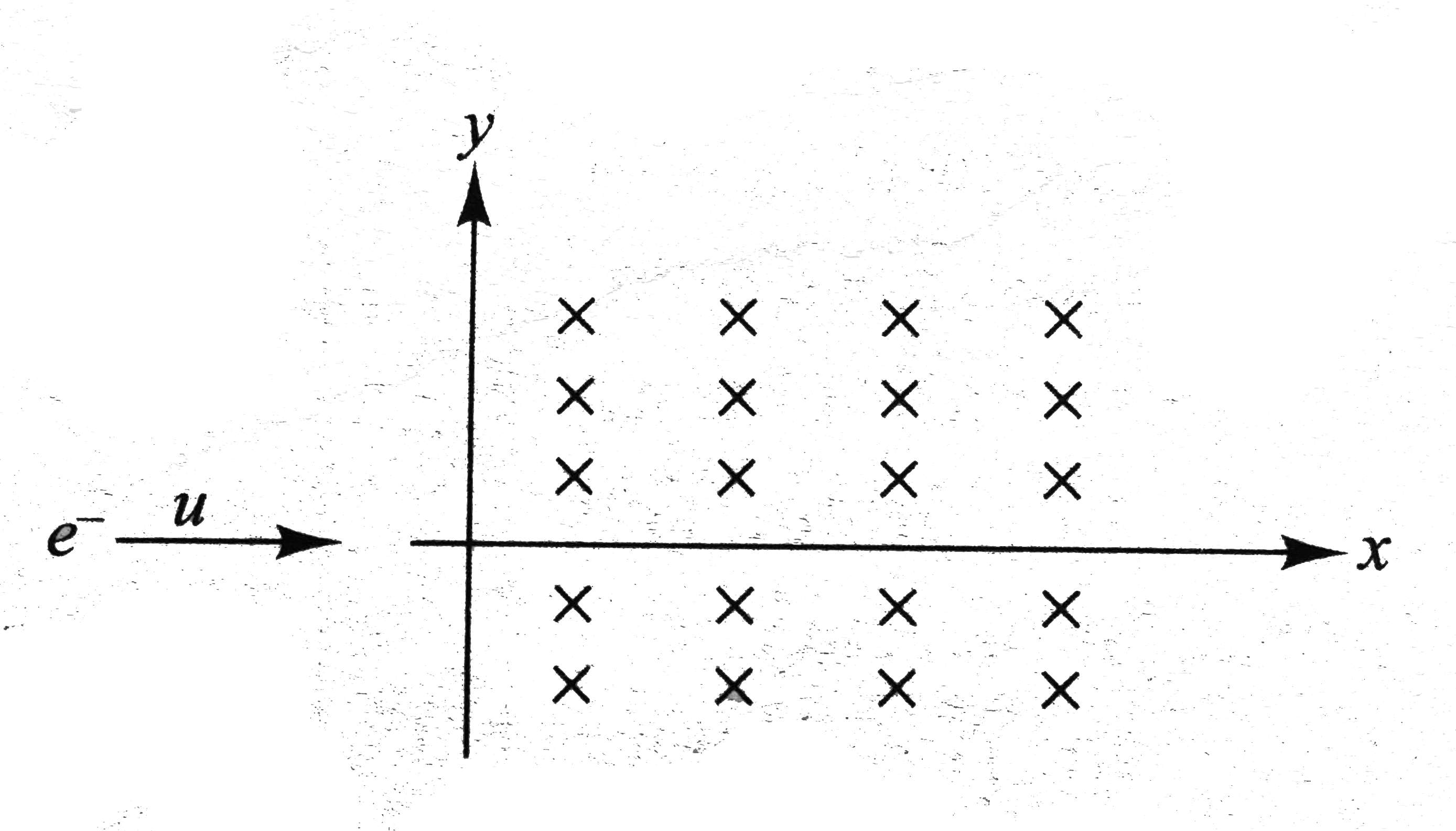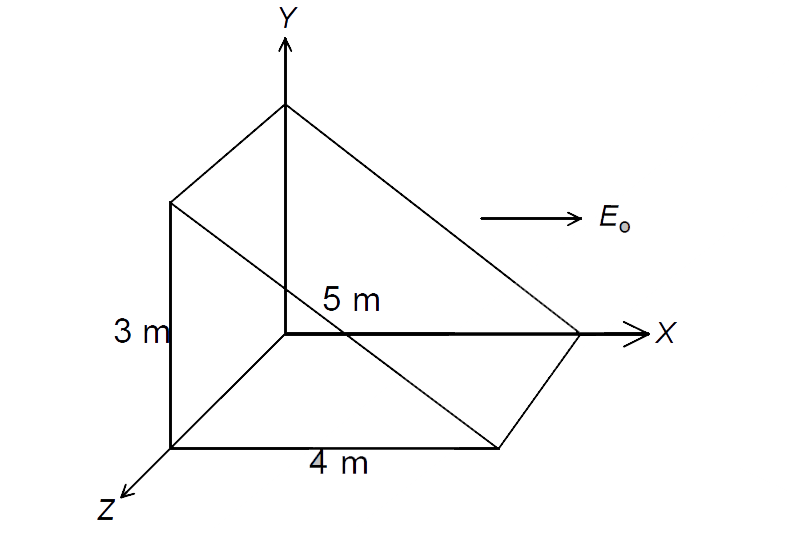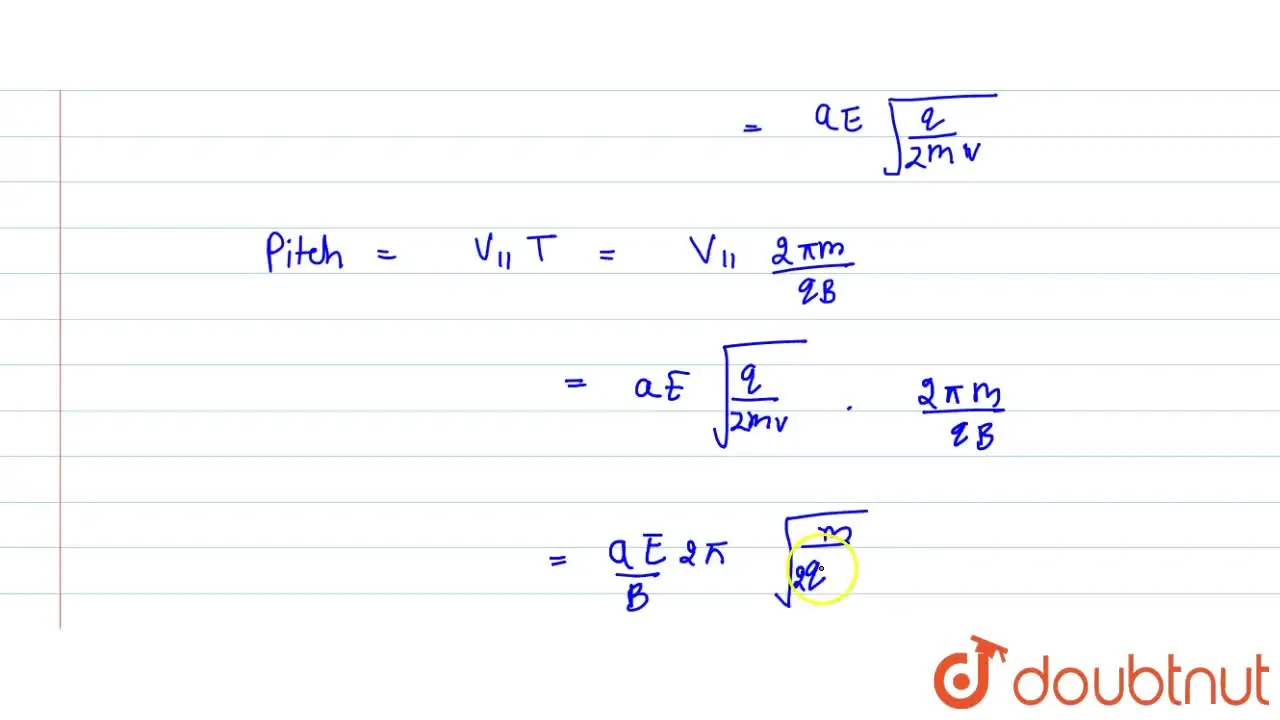A positively charged particle, having charge q, is accelerated by a potential difference V. This particle moving along the x-axis enters a region where an electric field E exists. The direction of the electric field is along positive y-axis. The electric field exists in the region bounded by the lines Beyond the line (i.e., in the region ), there exists a magnetic field of strength B, directed along the positive y-axis. Find

a. at which point does the particle meet the line .
b. the pitch of the helix formed after the particle enters the region (Mass of the particle is m.)
The correct Answer is:(a) ; (b)
The work done by the potential difference gets stored as its kinetic
energy.
(a) When it enters the region , it experiences an electric
field
Time taken to cross the region:
The distance travelled in y-direction during this time is
Hence, the particle meets the line at point
(b) Now, velocity of the particle as it crosess the line
Magnetic field in this region,
Hence, the time period of revolution ,
Pitch
.
Related Playlists
- BOOK - CENGAGE PHYSICSCHAPTER - MAGNETIC FIELD AND MAGNETIC FORCESEXERCISE - Exercises Single Correct70videos
MAGNETIC FIELD AND MAGNETIC FORCES
- BOOK - CENGAGE PHYSICSCHAPTER - MAGNETIC FIELD AND MAGNETIC FORCESEXERCISE - Exercises Multiple Correct25videos
MAGNETIC FIELD AND MAGNETIC FORCES
- BOOK - CENGAGE PHYSICSCHAPTER - MAGNETIC FIELD AND MAGNETIC FORCESEXERCISE - Exercise1.314videos
MAGNETIC FIELD AND MAGNETIC FORCES
- BOOK - CENGAGE PHYSICSCHAPTER - KINETIC THEORYEXERCISE - Question Bank31videos
KINETIC THEORY
- BOOK - CENGAGE PHYSICSCHAPTER - Magnetism and MatterEXERCISE - Question Bank50videos
Magnetism and Matter
Similar Questions
A positively charge particle moving along x-axis with a certain velocity enters a uniform electric field directed along positively y-axis. Its
View SolutionA charged particle free to move in an electric field always moves along the electric field line.
View SolutionDepict the fields diagram of an electromagnetic wave propagating along positive x-axis with its electric field along y-axis.
View SolutionAn electron moving with a speed u along the positive x-axis at y=0 enters a region of uniform magnetic field which exists to the right of y-axis. The electron exits from the region after some time with the speed v at coordinate y, then
 View Solution
View SolutionA charged particle is at rest in the region where magnetic field and electric field are parallel. The particle will move in a
View SolutionIn an electric field region, the electric potential varies along the x-axis as shown in the graph. The x components of the electirc field in the regions for the intervals PQ and QR as market in the garph, in N/C, are respectively:
 View Solution
View SolutionThe wedge-shaped surface in figure is in a region of uniform electric field E0 along x axis. The net electric flux for the entire closed surface is -
 View Solution
View SolutionPositively charged particles are projected into a magnetic field. If the direction of the magnetic field is along the direction of motion of the charged particles, the particles get
View SolutionA charge q moves in a region where electric field E and the magnetic field B both exist, then the force on its is
View SolutionA charged particle, having a charge q, is moving with a speed v along the x-axis. It enters a region of space where an electric field →E(=Eˆj) and a magnetic field →B are both present. The particle, on emerging from this region, is observed to be moving along the x-axis only. Obtain an expression for the magnitude of →B in terms of v and E. Give the direction of →B.
View Solution


